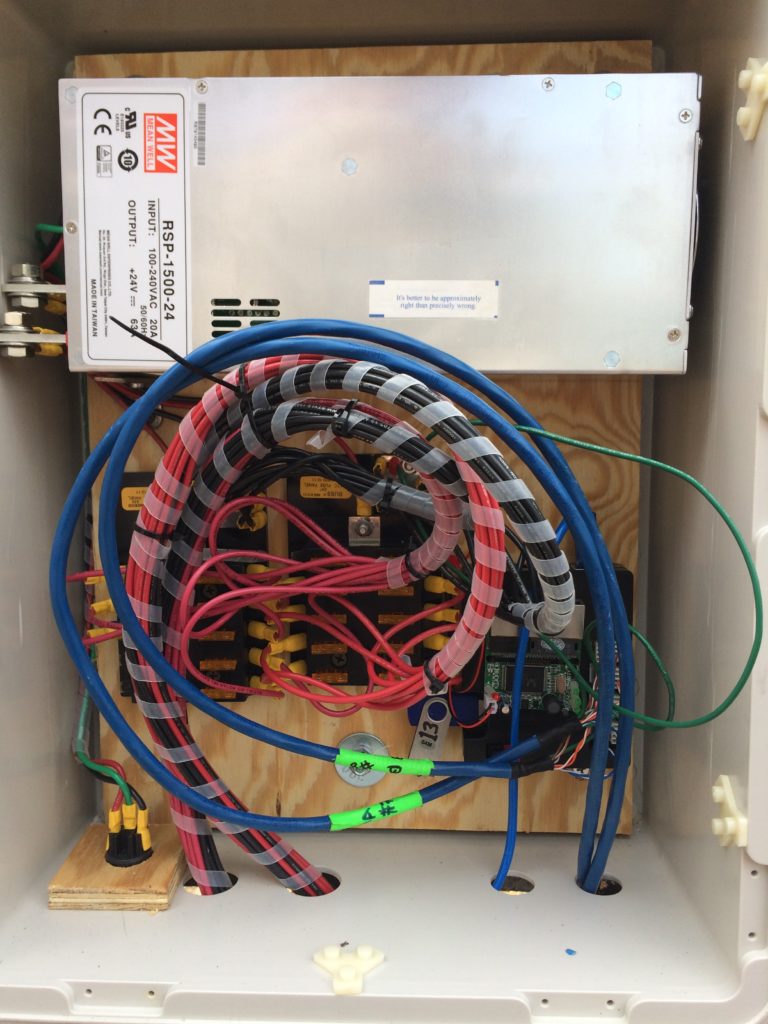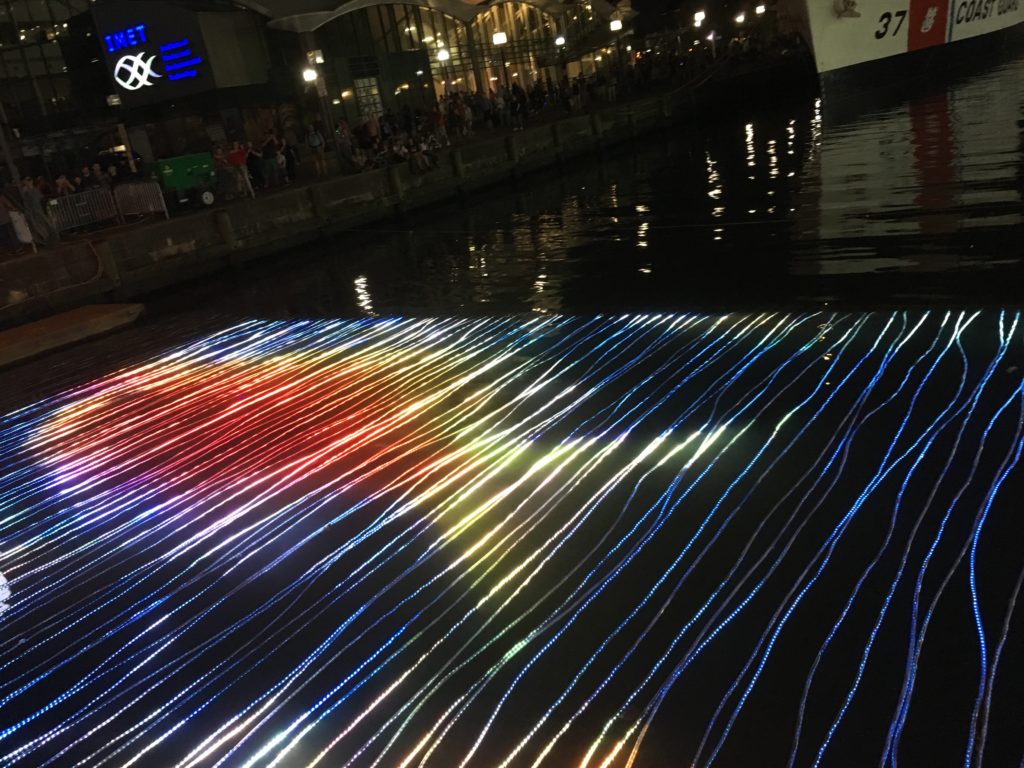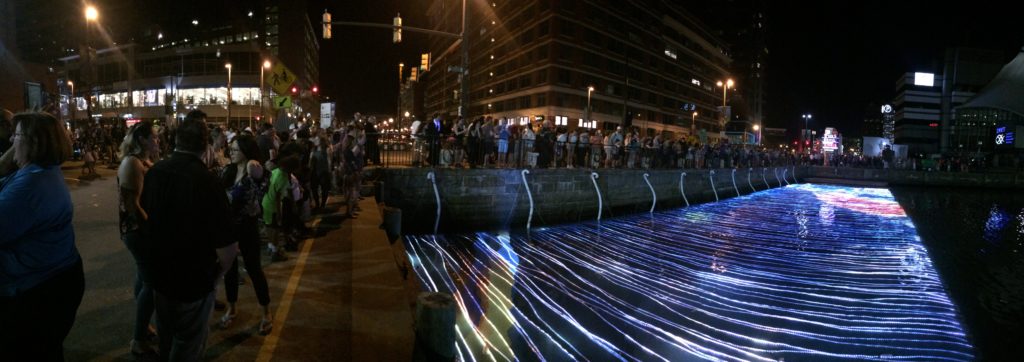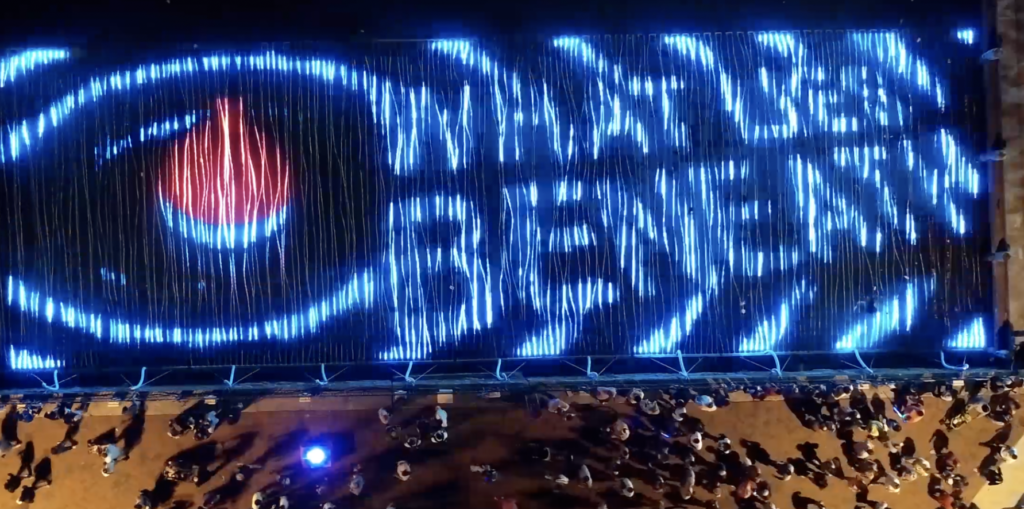In March we teased of our massive light art project entitled What Lies Beneath. It was all consuming in both time and space. Now that we’re on the other side looking back at it, it seemed to go smoothly, but it took everything we had to pull it off. Here is a look back on What Lies Beneath.
Motivated by the values of Formstone Castle, we brought together a group of artists and pushed them out of their comfort zone to try new things with the skills we knew they could develop. Justin Duvall brought his strengths as an an animator of strange creatures, Kate Haberer brought in her skills as an illustrator and Andrew Dixon brought in his skills as a graphic designer. Each of them created a short clip, not fulling knowing what it would look like on a first of it’s kind display. For backup, I filmed some clips at the aquarium to flesh it all out. Last but not least, Adam T. Rush returned to a Formstone Castle project creating a score tying it all together. Here is the result:
Now what’s behind this magic? I’ll try to break down the 6 months of work and try to explain it for those that want to see what lies beneath.
From the ground up this was designed to be modular. Each section is 10 feet wide and 37 feet long. Each module has it’s own power supply, controller and ethernet switch. Plug it into 120v-240v power and into it’s neighbor for signal. We built 14 modules, but for safety reasons, we only installed 12 for Light City.

To keep it all dry, all the LED strips are run through 1″ vinyl tubing.

Because we could only supply power from one end and had to send that power from shore, the power wires were up to 20′ long + 37′ if you count the LED strips. For this reason our LED strips are custom 24v with a thicker PCB foil. For WS2811 LEDs, our 24v requirement meant each pixel contained 6 LEDs. This worked out in our favor. Each 10 ft module contained 16 LED strips making the length of our pixels and the spacing between our strips the same. 1:1 made mapping much easier for our animators. Here are some spicy facts:
- 192 LED strips (+ spares) @ 11 meters each
- 2.1km of LED strips
- 330 LEDs per strip
- 63,360 LEDs
- 192 x 55 pixels
- 1500 watts x 12 = 18,000 watts of power

Special thanks to all our friends who helped us to pull this off

